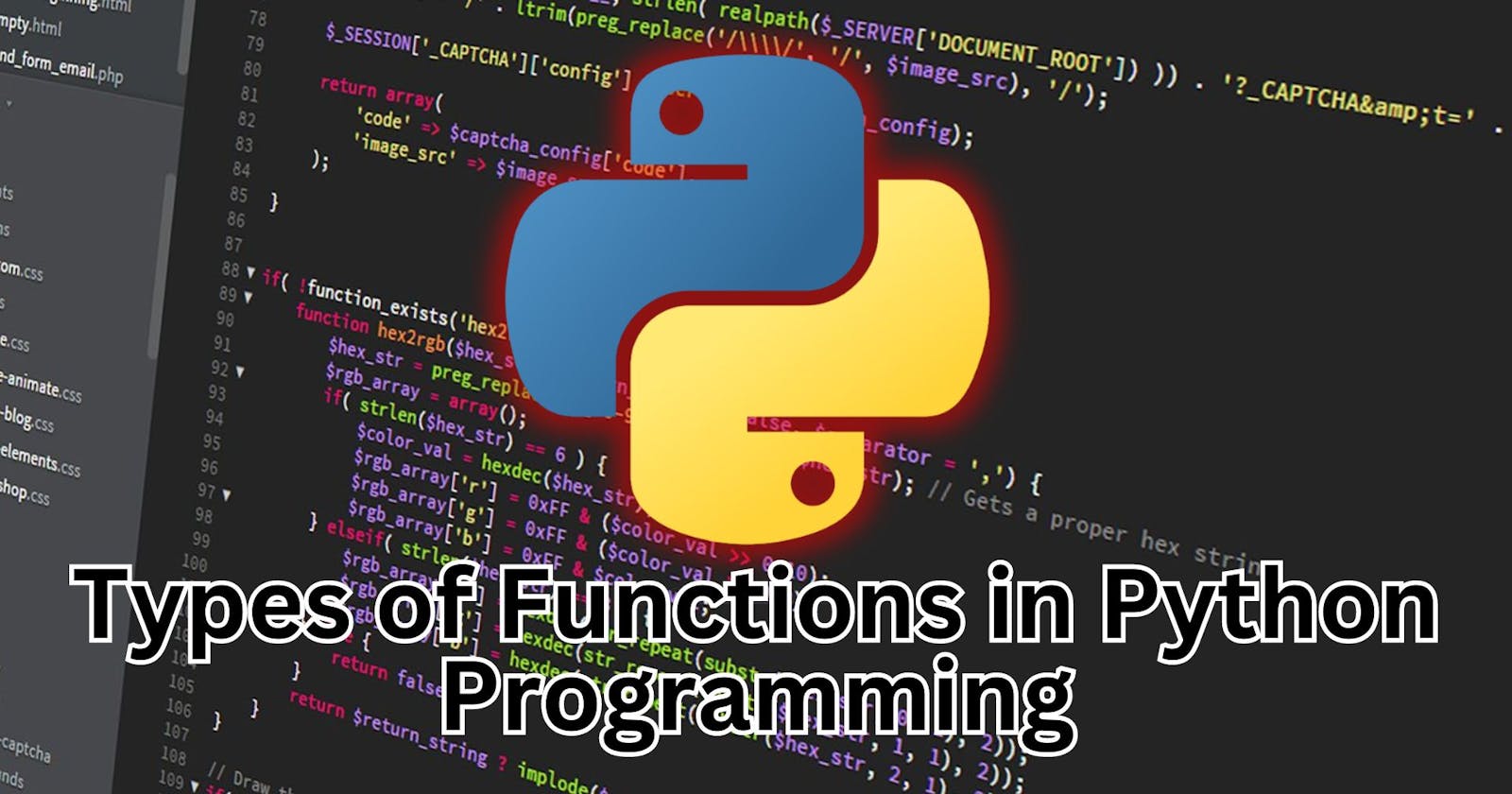Python, a versatile and widely-used programming language, offers a rich array of tools and constructs for developers to build powerful applications. Among these tools, functions stand out as fundamental building blocks, enabling modular and reusable code. Understanding the different types of functions in Python is crucial for mastering the language and writing efficient, maintainable code. In this comprehensive guide, we delve into the various types of functions in Python, exploring their features, use cases, and best practices.
Built-in Functions: Python comes with a robust set of built-in functions that cover a wide range of tasks. These functions are readily available for use without the need for importing additional modules. Examples of built-in functions include
print(),len(),type(),sum(),max(),min(), andrange(). They provide essential functionality for common operations such as input/output, data manipulation, and mathematical computations.User-defined Functions: User-defined functions are functions created by the programmer to encapsulate a specific piece of functionality. They promote code reuse, readability, and maintainability by breaking down complex tasks into smaller, manageable units. In Python, defining a function involves using the
defkeyword followed by the function name, parameters, and a block of code encapsulated within an indented scope. Example:def greet(name): print("Hello, " + name + "!")Anonymous Functions (Lambda Functions): Lambda functions, also known as anonymous functions, are small, inline functions defined using the
lambdakeyword. Unlike traditional user-defined functions, lambda functions can have only a single expression. They are often used in scenarios where a small function is needed for a short duration, such as within higher-order functions likemap(),filter(), andsorted(). Example:square = lambda x: x ** 2Recursive Functions: Recursive functions are functions that call themselves within their own definition. They are particularly useful for solving problems that can be broken down into smaller, similar subproblems. In Python, recursion allows elegant solutions to problems like calculating factorial, generating Fibonacci series, and traversing hierarchical data structures like trees and graphs. However, excessive recursion can lead to stack overflow errors, so it's essential to define appropriate base cases. Example:
def factorial(n): if n == 0: return 1 else: return n * factorial(n-1)Higher-order Functions: Higher-order functions are functions that can take other functions as arguments or return functions as results. They facilitate functional programming paradigms and enable powerful techniques such as function composition, currying, and partial application. Python supports higher-order functions through its first-class function capabilities, allowing functions to be treated as first-class citizens. Examples of higher-order functions in Python include
map(),filter(),reduce(), and function decorators.Generator Functions: Generator functions are a special type of function in Python that allows the creation of iterators using the
yieldkeyword. Unlike regular functions that return a single value, generator functions can yield multiple values, producing them one at a time. This enables efficient memory usage and lazy evaluation, making generator functions ideal for working with large datasets or infinite sequences. Example:def fibonacci(): a, b = 0, 1 while True: yield a a, b = b, a + b
Conclusion: Functions are essential components of Python programming, providing a mechanism for organizing code, promoting reusability, and enhancing readability. By understanding the various types of functions available in Python, developers can leverage their features to write efficient, modular, and maintainable code. Whether it's built-in functions for common tasks, user-defined functions for encapsulating custom logic, or specialized functions like lambda functions, recursion, higher-order functions, and generator functions, Python offers a diverse toolkit to suit a wide range of programming needs. Mastery of these functions empowers developers to tackle complex problems effectively and express their ideas concisely within the Python ecosystem.
